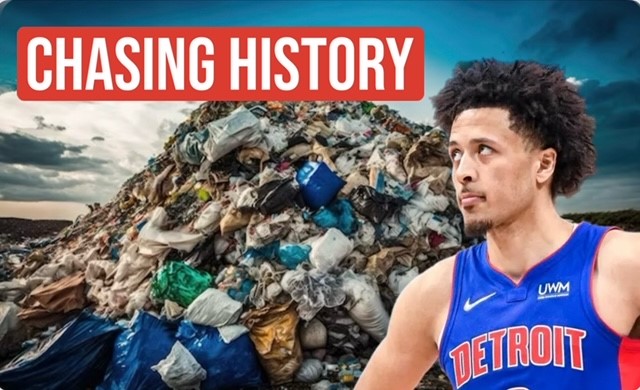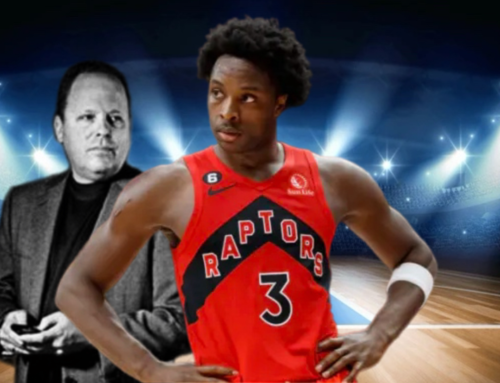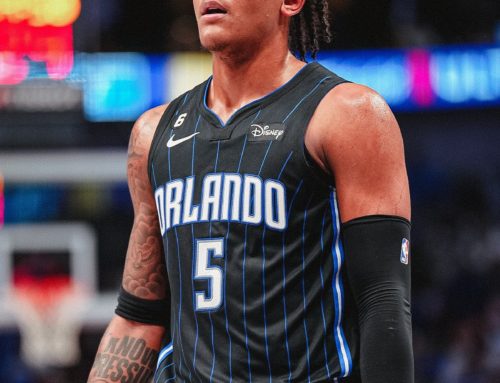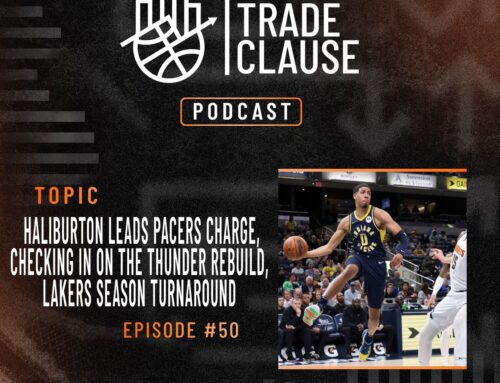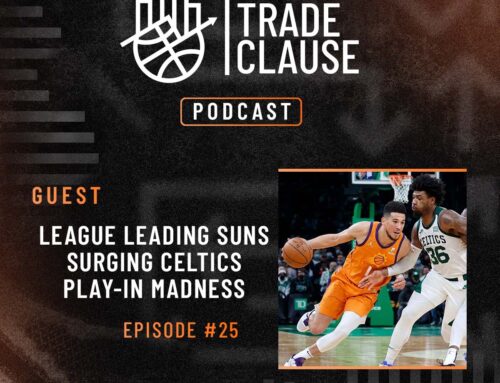By Anil Gogna | December 28, 2023
Within just a couple of weeks, the Detroit Pistons have gone from completely unwatchable, to must-watch TV, as they approach the most historic losing streak in NBA history.
They’ve already tied the overall record for most losses in a row (28), but with a loss against the Toronto Raptors on Saturday, they’ll become the sole holders of that record. Then the story shifts to seeing if they can hunt down the overall worst single season record which is currently held by the 2011-12 Charlotte Bobcats that went 7-59 (0.106) in a shortened season. The Pistons are currently on pace to win only 5 games and shatter that record.
But how did the Pistons get here? And how could they potentially turn things around?
Looking back on the Pistons’ recent history, this stretch of unremarkable play dates all the way back to 2009. In the past 13 seasons, Detroit has only made the Playoffs twice and won a total of 0 games (2 first round sweeps). Their only winning season over that stretch was in 2016 when they won 44 games.
But the interesting thing is, when we look back at how they got here, there isn’t a clear catalyst that led them to where they find themselves today. There isn’t a terrible move, really bad signing or huge draft bust that you can point to. It’s just been a compilation of small marginal moves that weren’t great, combined with an absence of team chemistry, poor roster construction and a lack of player development.
There are 3 primary ways that teams improve that we will examine: (1) through the Draft, (2) via Free Agency & (3) via Trades. But before we dive into that, lets first take a look at who exactly is steering this ship in Detroit.
Who is Troy Weaver?
Leading the charge in Detroit is first time General Manager Troy Weaver. Many may not be familiar with Troy Weaver’s history, but before he got to Detroit, he was known for having a special eye for talent.
In the early 2000s, Troy Weaver was an assistant with Syracuse and is credited with being the reason they pursued Carmelo Anthony. After seeing him play in a game, Troy Weaver told others on the staff that Anthony was the best player on the floor, despite much higher ranked players in the game at the time. Carmelo was eventually recruited to Syracuse, where he would go on to win a national championship.
In the mid-2000s, Troy Weaver landed with the Utah Jazz as the head of scouting. He was on the staff when they drafted Deron Williams with the 3rd overall pick in 2005 and also when they discovered Paul Millsap with the 47th overall pick in the 2006 draft, who would go on to become a 4x All-Star, a rare feat for a player selected that late.
From 2008 to 2020, Troy Weaver would join the Oklahoma City Thunder’s Front Office as an Assistant GM and eventually work his way up to Vice President of Basketball Operations. One of his most notable moves was in his 1st year with the franchise, pushing the rest of the front-office to select Russell Westbrook with the 4th overall pick of the 2008 draft. We all know Westbrook for the being the former MVP and multiple time all-star, but before he got to the NBA, he was only a 3-star recruit in High School and averaged just 8ppg over his 2-years with UCLA.
So coming into Detroit, Troy Weaver already had a reputation of being able to find diamonds in the rough. Let’s take a look at how that’s translated so far in Detroit.
Draft Pick History
Troy Weaver has led the Pistons’ Front Office over the past 4 drafts. These are the players they’ve drafted in the 1st round since he took over:
- 2020: Killian Hayes (#7), Isaiah Stewart (#16 via trade), Saddiq Bey (#19 via trade)
- 2021: Cade Cunningham (#1)
- 2022: Jaden Ivey (#5), Jalen Duren (#13)
- 2023: Ausar Thompson (#5)
Revisionist history can always make mistakes seem obvious, but objectively speaking, the drafting of the last 3 years hasn’t been that bad. What really hurt them is that in Troy Weaver’s first year, in the 2020 draft where they ended up with 3 players in the top 20, they missed out on: Tyrese Haliburton, Tyrese Maxey, Devin Vassell, Desmond Bane, Jaden McDaniels & Immanuel Quickley.
Having been able to pair one of these players with Cade Cunningham (or another top player from the 2021 draft) definitely would have helped move the franchise forward and probably back into playoff contention.
Another glaring problem is that regardless of who they’ve drafted, the Pistons haven’t had a lot of success developing their players. The Pistons have 9 former lottery picks on their roster today, but not a single one that’s ever made an All-Star team. And we’re seeing more early signs of history repeating itself with Jaden Ivey who’s statistically regressed in Year 2 and Ausar Thompson, who has begun to fall out of their rotation for players that are likely not part of their long-term future.
Trade History
In 3 ½ years, Troy Weaver’s executed 22 trades. Most of them minor, but there were a few notable ones:
- In 2020, as part of a 3-team trade, Detroit traded 4 second round picks, along with Bruce Brown, Luke Kennard & Justin Patton in exchange for Saddiq Bey, Rodney McGruder, 1 second round pick & cash. With the benefit of hindsight, we can now see how that played out. 3 seasons later, Detroit didn’t want to extend Saddiq Bey so they traded him for James Wiseman who is not expected to be part of their future. Neither Saddiq Bey or James Wiseman has better than a 30% career winning percentage. On the other hand, both Bruce Brown & Luke Kennard developed into solid role players. Bruce Brown went on to win a championship with Denver before signing a big contract with the Indiana Pacers last offseason and Luke Kennard advanced to the Conference Finals in 2021 and signed an extension that could be worth as much as $64M.
- In July of 2022, Detroit traded Jerami Grant to Portland for draft picks (insignificant return)
- In Sept of 2022, Detroit traded Kelly Olynyk & Saben Lee for Bojan Bogdanovic
The Bojan Bogdanovic trade was probably their best one, but what we’re seeing is that for the most part, Detroit continues to lose around the margins. They traded Bruce Brown too early. You could probably make the same case for Luke Kennard. They probably should’ve retained Saddiq Bey instead of chasing the James Wiseman experiment that will leave them with nothing and they didn’t get much in return for Jerami Grant.
Free Agent & Extension History
Detroit has avoided signing any albatross contracts, but they also haven’t had many huge wins in Free Agency. In Troy Weaver’s first offseason (2020) they made a number of very odd acquisitions, as they kept adding big men to their roster:
- Jerami Grant was acquired via sign-&-trade for 3-years $60M
- Mason Plumlee was signed for 3-years $25M
- Jahlil Okafor was signed for 2-years $4M
- These signings were also following them drafting Isaiah Stewart another big man
The contracts alone weren’t terrible, but the fit from a roster perspective seemed without clear direction. They made marginal signings in the following years, but nothing noteworthy.
In October 2022, they did have perhaps their best signing, which was the 2-year extension that they signed Bojan Bogdanovic to. Great deal, but again, they probably should’ve moved him last trade deadline when his value was at its peak.
They also signed Isaiah Stewart this past offseason to a very reasonable 4-year $60M rookie scale extension that could be a nice trade chip in the future.
And also this past offseason, they went all-in on new Head Coach Monty Williams who they signed to a then record breaking 6-year $78.5M contract which can increase to 8-years $100M with incentives. At the time, Monty Williams was the winningest coach in the league since 2021, so Troy Weaver made an investment in what he’s hoping will be a leader that can help create a winning culture. It hasn’t happened yet, but it’s still very early.
What’s Next for the Pistons?
Dating back to 2009, the Detroit Pistons have had 10 lottery picks but have only had 1 player that they drafted and developed into an All-Star and that was Andre Drummond. They need to address this problem because if they can’t develop their players, it won’t matter how many lottery picks they get, they will never turn this around.
Once they address this, they need a timeline by which they’re going to try to become competitive. The clock is likely ticking for Troy Weaver who will need to find an answer sooner rather than later. Assuming he’s working on an accelerated timeline, if everything breaks perfect, Detroit could have a chance at becoming a play-in team by the 2025-26 season.
It all starts with this year’s trade deadline. Flipping Bojan Bogdanovic for maximum value has to be a top priority. If they can also turn Monte Morris & Alec Burks’ expiring contracts into value as well, that would be a bonus.
They then need to follow it up with a terrific offseason. Despite the 2024 draft class being weak, they need to find a player that will be part of their long-term plans. Then entering the 2024 offseason with over $40M of cap space, they need to focus on signing rotational pieces. They don’t need stars; they need to build a good foundation so they can attract stars later. Ideally also addressing their shooting woes at the same time, to improve upon their league worst 3-point shooting. Then in the 2024-25 season, they need to identify which players fit best, trade the others and prioritize the development of their young core.
Realistically, Detroit is going to have another high lottery pick in 2025, which is supposed to be a much stronger draft class and hopefully then they can land a franchise altering player like Cooper Flagg, allowing Cade to eventually become a supporting star.
And that… is their best shot at turning this thing around quickly.
